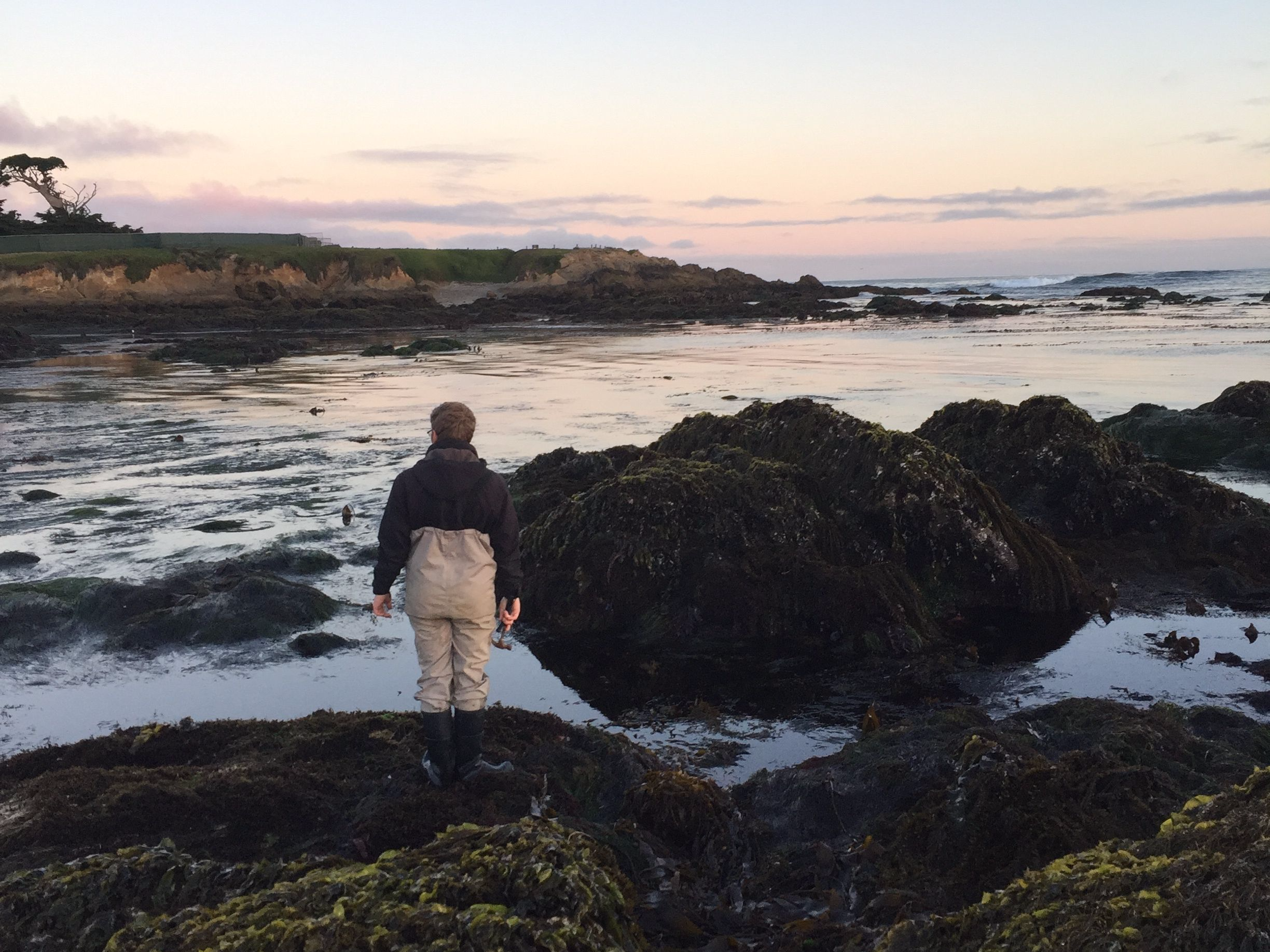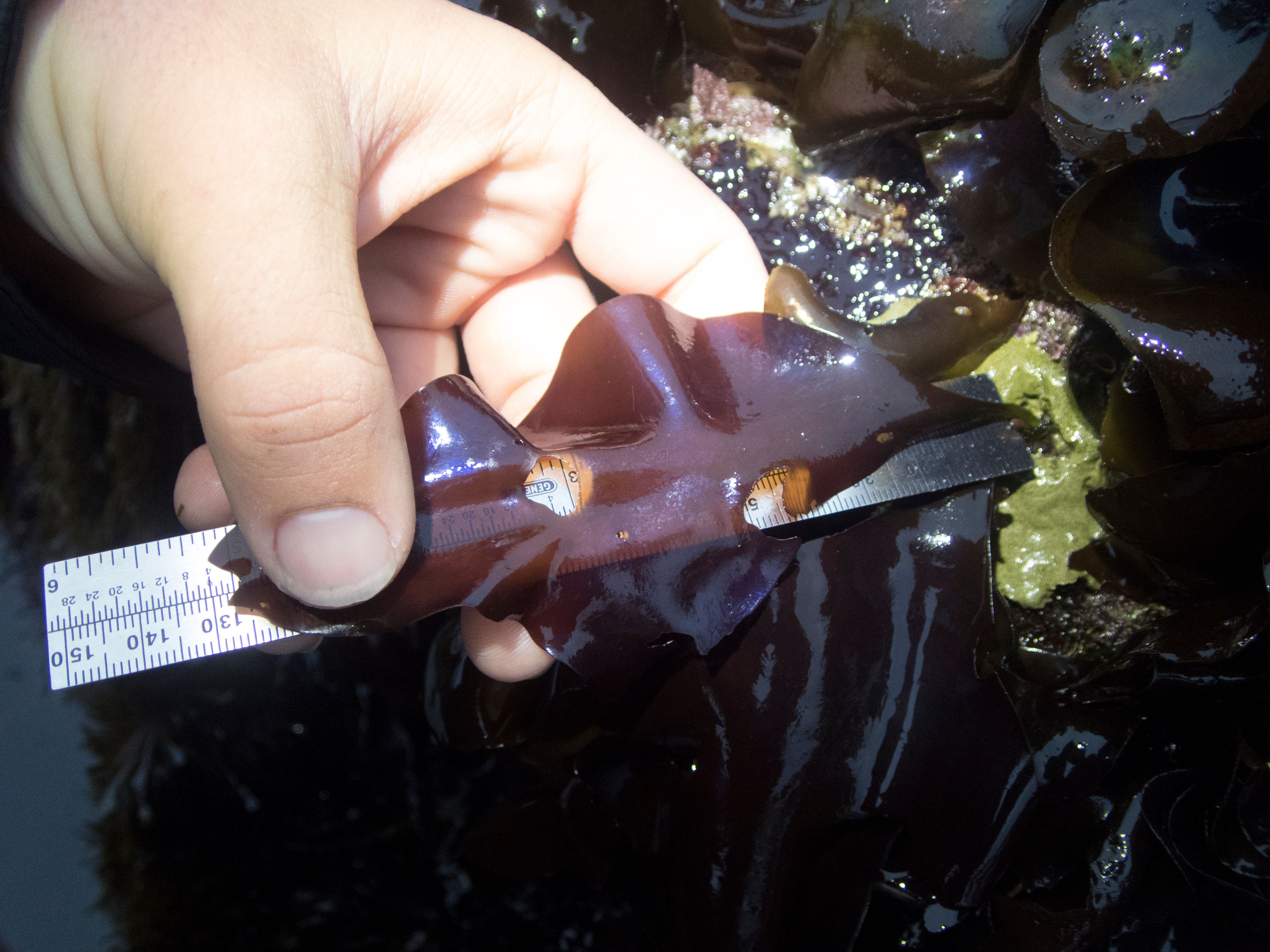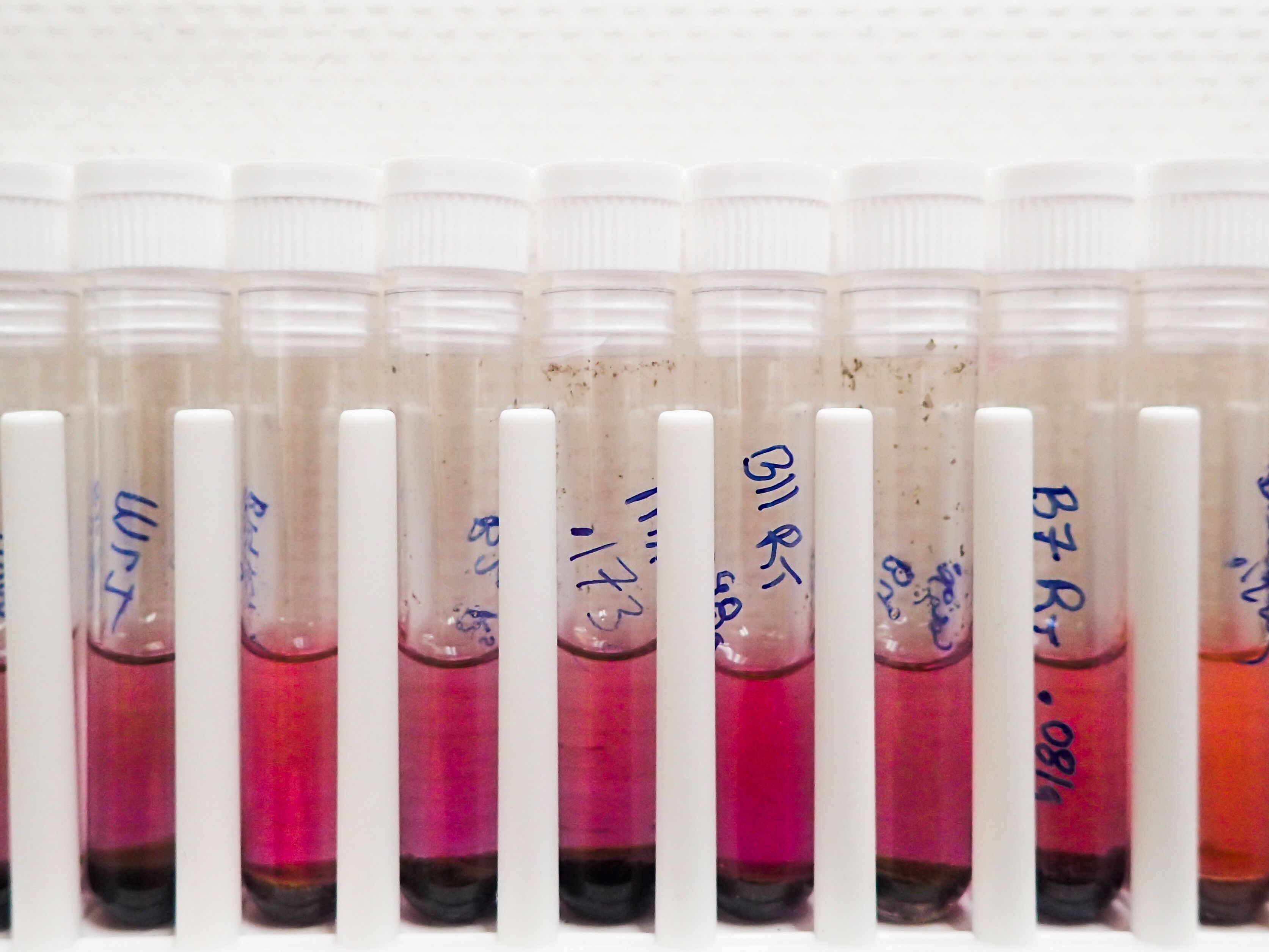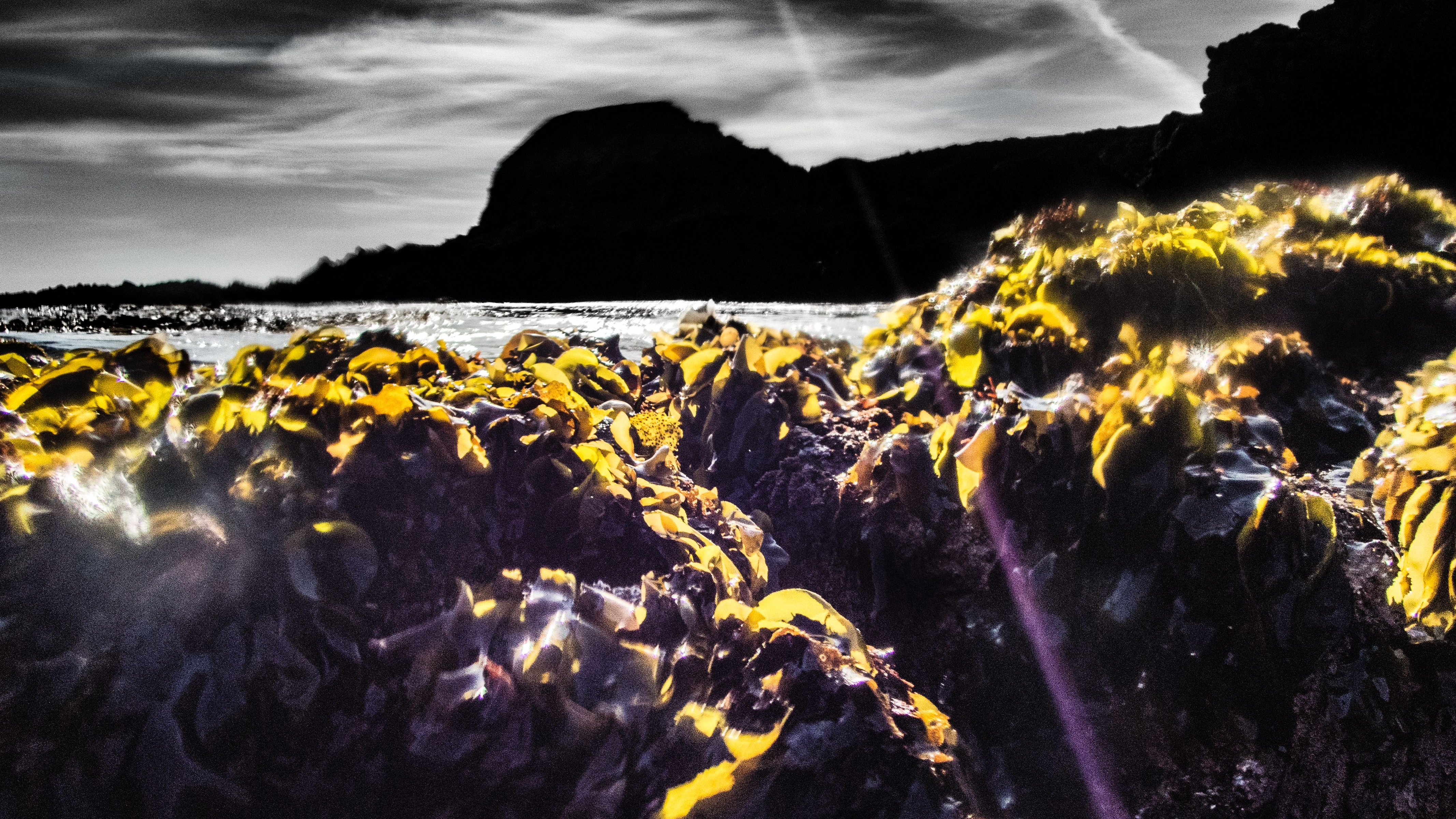

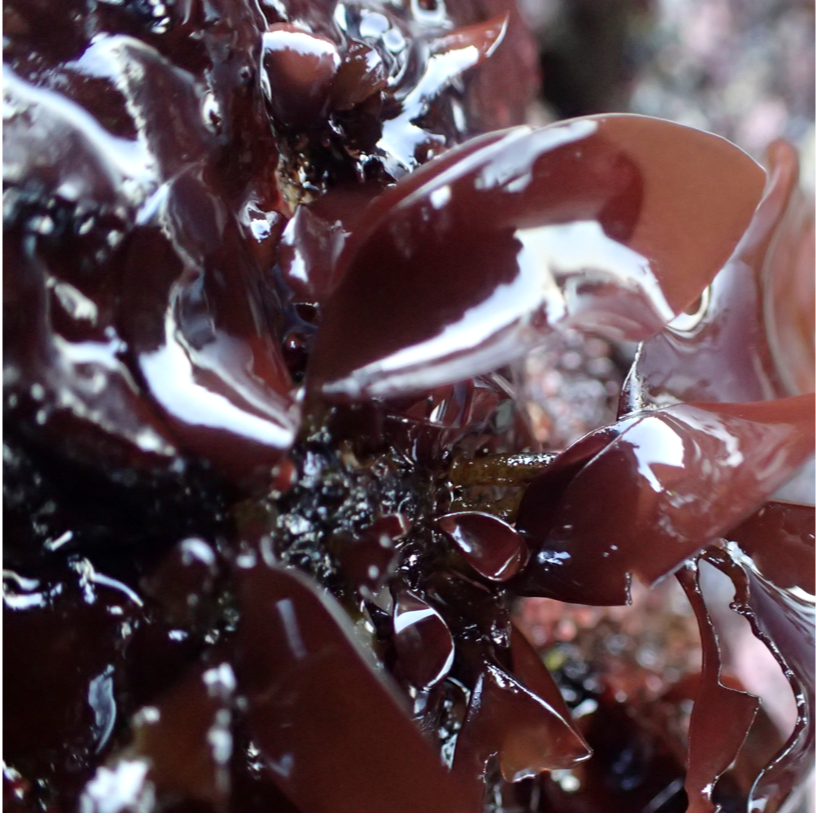
Mazzaella splendens
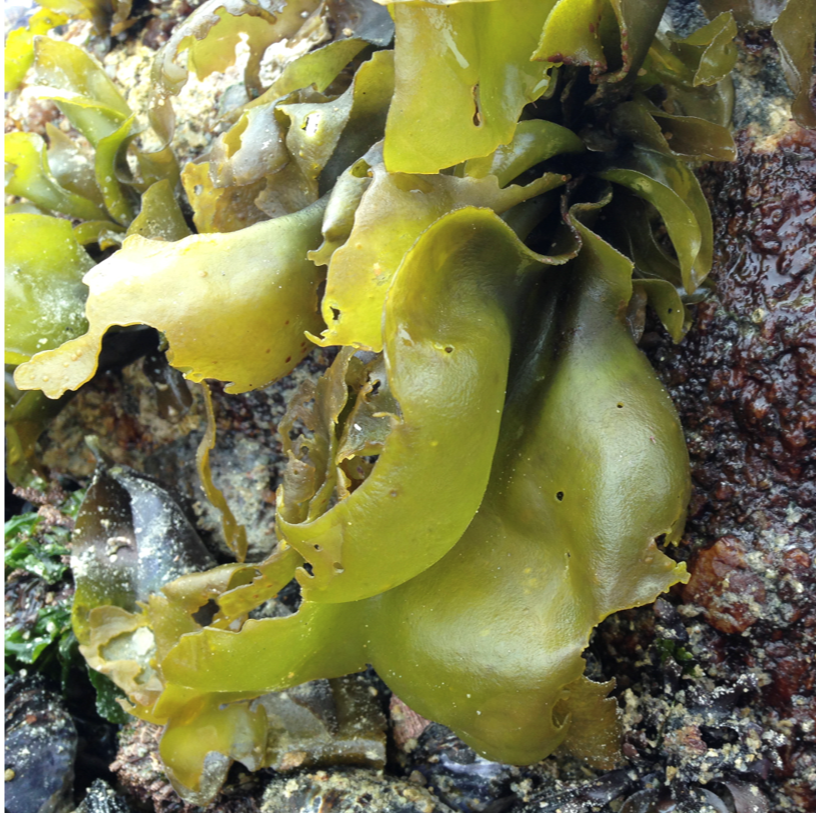
Mazzaella flaccida
California’s intertidal seaweeds Mazzaella flaccida and Mazzaella splendens reside in different intertidal zones. The yellow-green M. flaccida is found in the high- and mid-intertidal, while the brown-purple M. splendens is found in the mid- and low-intertidal. These differences in intertidal position and blade color, in addition to minute differences in morphology, are typically used to differentiate these species in the field. However, a reciprocal transplant study by Foster (1982) found that, not only can M. flaccida and M. splendens reside in each other’s zone, but the color of M. splendens can change to the yellow-green of M. flaccida. Thus, Foster (1982) suggested that these two species may be conspecifics. Presently, genetic evidence supports the separation of both species, however, little progress has been made towards determining the cause, mechanism, and impact of this chromatic plasticity on thallus physiology.
